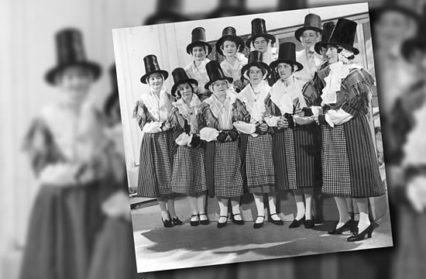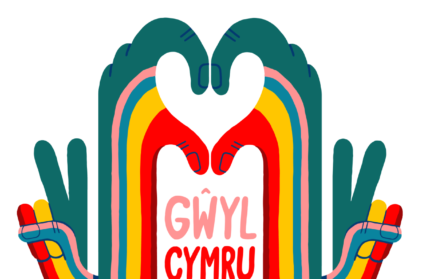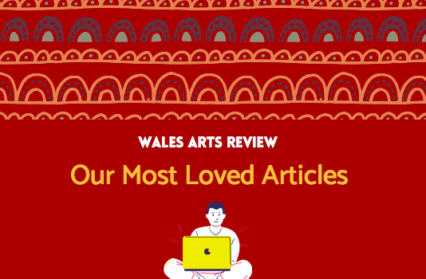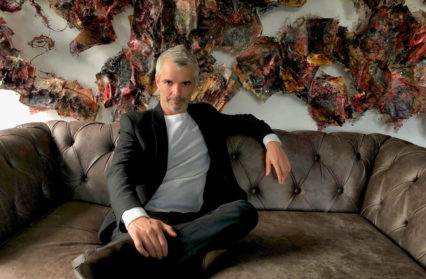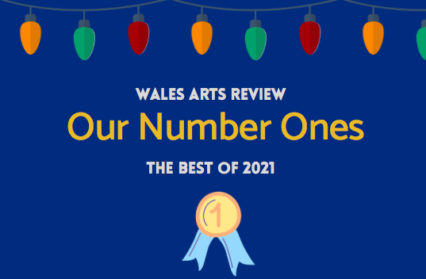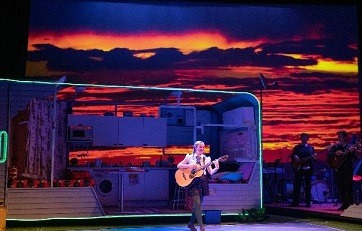Adam Somerset listens to complementary radio productions that have Welsh history at their centre; BBC Radio 4’s Welsh Ladies and BBC Radio 3’s The Milk Way.
Theatre in Wales in late 2018 was public, clamorous and disputatious. Radio quietly went about its business and, hidden within its busy schedules, produced two programmes of fine quality that spoke of representations of Wales.
The Milk Way and Welsh Ladies, less than thirty minutes each, differ in form, but are complementary; both take the listener into a multi-stranded Wales of the past. The Milk Way describes itself as a radiophonic poem. It has an obvious ancestor in Dylan Thomas and another poet of Newquay, Samantha Wynne-Rhydderch, is its writer. In alliance with composer Nina Perry the programme conjoins the flow of milk from west Wales with the fragile coastline being eroded by the force of the sea.
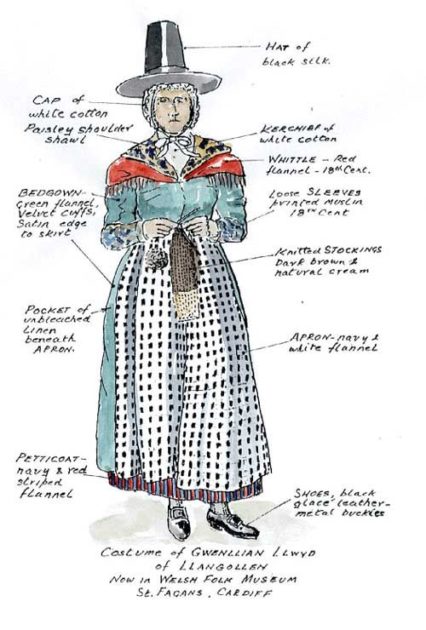 The Milk Way, Y Wac Laeth, encompasses voices from past and present. Mae is a young woman who moves to work in a dairy in 1960s London. Jac Alun is a sailor from a local farming family. The migrants to the city are contrasted with voices of those who live and work at the edge of the land. A farmer, an artist and a marine biology student all feature. The voices include ones well known from stage and screen, Sara Gregory and Matthew Gravelle. Open Audio’s production, made for Radio 3, haunts and lingers.
The Milk Way, Y Wac Laeth, encompasses voices from past and present. Mae is a young woman who moves to work in a dairy in 1960s London. Jac Alun is a sailor from a local farming family. The migrants to the city are contrasted with voices of those who live and work at the edge of the land. A farmer, an artist and a marine biology student all feature. The voices include ones well known from stage and screen, Sara Gregory and Matthew Gravelle. Open Audio’s production, made for Radio 3, haunts and lingers.
Welsh Ladies opens with the subdued voice of presenter Mab Jones looking at an image of a Welsh woman. She has, she explains, a collection of historic postcards. Their sources have been variously postcard fairs and charity shops; a few she has been sent. The rustle of a protective folder can be heard. The images, which go back to the 19th century, have a consistency to them: “cheerful, ruddy in face, shawl and tall black hat, young or old, serious, industrious, knits or spins.” She announces the programme’s theme: “I want to find out who these women were and give them voice.”
There is high art in the form which producer Megan Jones has made. A chapter structure, separated by harp music, interweaves history and culture. There has also been much research. Michael Freeman, who has been studying the topic for 15 years, gave two hours of interview. From this compendium, “the Welsh hat is so simple”, he says, “it’s an icon. If you want someone to represent Wales you put them in a Welsh hat. It can be a man or a woman.” The Welsh man as stereotype appears in a cartoon in the 1840s in Punch and becomes a regular. In fact the postcards are not quite as they seem. The earliest are all staged. A picture purports to be of two Welsh peasants but in fact, says Freeman, depicts the daughters of the photographer who have been dressed for the occasion.
Zoë Brigley Thompson, a professor at Ohio State University Welsh women, adds historical shading. She mentions the practice of “bundling”. If two teenagers liked one another they might spend the night together. But they were sewn into sacks with a plank of wood between them. It was a practice, says Thompson, that was not favoured by a later age.
Clothes are signifiers. At the beginning of the 19th century clothing is made from fabric sourced locally. But then, visitors are prepared to pay a few pence for a photograph of a costume that apparently denotes tradition. The costume endows status when worn at markets. In the 1880s the Prince of Wales visits Wales and middle-class women adopt the dress.
Mab Jones visits Mererid Hopwood who owns a hat belonging to her Aunt Bessie. Rufus Mufasa recalls dressing up in childhood as a kind of celebration of ancestors- “reconnecting with aunties and uncles I had as a child.” The practice is repeated with her own children. She likes the word “com-memoration” as a “shared memory, this public-facing celebratory kind of memory, part of identity-making, the machine of making us belong.”
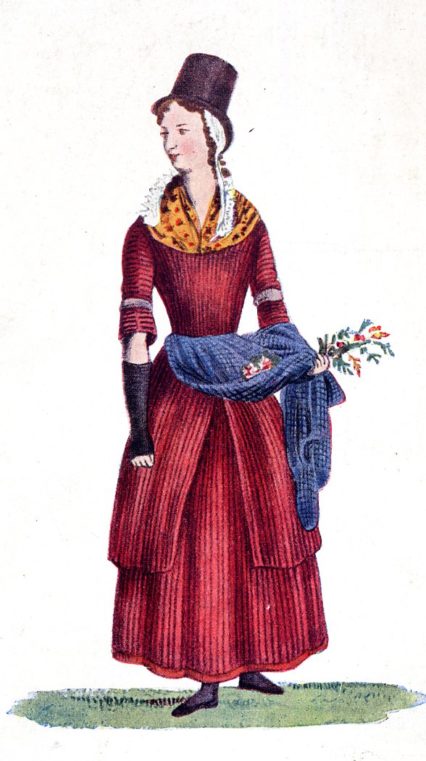 Working women are largely absent from the historiography of Wales. Welsh Ladies changes gear to look at women in culture. The language has a specific word denoting a woman poet from the late middle ages. Dr Cathryn Charnell-White reads a poem about jealous wives. Gwerfyl Mechain, who died in 1502, is remembered as the oldest known woman poet. She is volubly criticised in performance at the palace of the Bishop of Bangor. The woman poet is referred to as shouting, the translation into English “a horrible hag”.
Working women are largely absent from the historiography of Wales. Welsh Ladies changes gear to look at women in culture. The language has a specific word denoting a woman poet from the late middle ages. Dr Cathryn Charnell-White reads a poem about jealous wives. Gwerfyl Mechain, who died in 1502, is remembered as the oldest known woman poet. She is volubly criticised in performance at the palace of the Bishop of Bangor. The woman poet is referred to as shouting, the translation into English “a horrible hag”.
Mererid Hopwood reminds the listeners that poetry-making was in the domain of a guild which allowed or forbade entry. Bards carried a licence, literally a poetic licence. Presenter Mab Jones is taken aback by the rough-and-tumble between poets. Not so, she is told. Poets delighted in slandering one another and Gwerfyl herself was “a formidable presence, she gave as good as she got”.
The 18th century sees a period of democritisation in verse-making. “We know a lot about strict-metre poets because they were married to poets.” In the forefront is Angharad Jones who died in 1749. She lost a son at the age of 16 and her verse in the critical view is “it’s up there with the greatest, the classics”.
The elegy for her son, in the form of a cywydd, is read in part.
“There was a mild and dear garden of green trees,
Full of small plants, very pleasant, full this year,
That in a time I have known belonged to me.
The most beautiful, solid shoot of good growth was cut from my garden
A sweet shoot, tender and fair, growing strong and handsome, comely and fine,
Likely shortly to grow big and splendid.
He was the lily of my garden, and he was handsome,
He was my principal comfort, should I have had him;
He was the best scholar, high in esteem, he was the very pinnacle;
He was the head of my fair orchard,
He was honest and the head of my household.
He was the main scion of my house,
He was the pinnacle of Penamnen.
In the space of three hours, the month of October
Cut down by strong hope, it withered my garden, shook my tree
Woe me the hour my sapling withered.”
These two programmes came quietly into the schedules. It goes without saying that the main media of Wales showed no interest. They are evidence of a rich and fruitful culture and should be heard.
The Milk Way and Welsh Ladies are both available on the BBC iPlayer.


